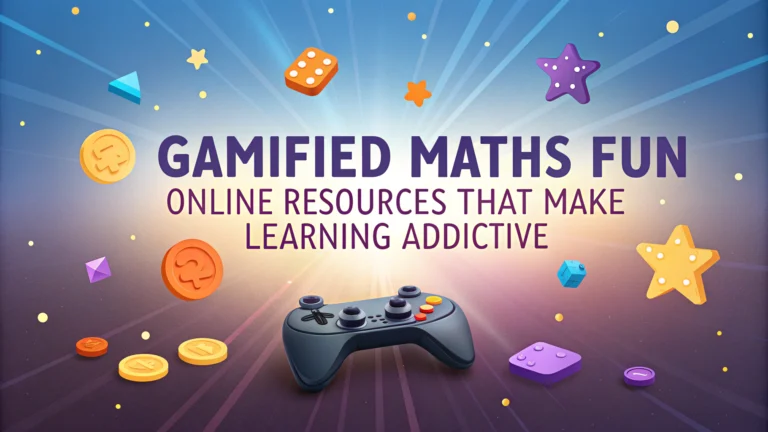Imagine a world where math problems become exciting quests and algebra transforms into an adventure game. That’s the power of gamified maths! This article explores how online resources turn learning into an addictive experience, making numbers your new best friends.
Understanding Gamification in Mathematics
Gamification applies game-design elements to non-game contexts, like education. In maths, it means using points, levels, and rewards to make learning more engaging.
Key benefits of gamified maths include:
- Increased motivation
- Better retention of concepts
- Reduced math anxiety
- Improved problem-solving skills
Top Online Platforms for Gamified Maths
Several websites and apps offer gamified math experiences. Here are some popular options:
| Platform | Age Group | Key Features |
|---|---|---|
| Prodigy Math Game | 6-14 years | RPG-style math adventures |
| DragonBox | 5-12 years | Algebra through puzzle-solving |
| Mangahigh | 7-16 years | Adaptive learning with games |
How Gamification Enhances Math Learning
Gamified math platforms use various techniques to boost learning:
- Immediate feedback: Players know right away if they’ve solved a problem correctly.
- Progressive challenges: Difficulty increases gradually, keeping learners in their “zone of proximal development”.
- Social elements: Leaderboards and multiplayer options add a competitive edge.
- Storytelling: Math concepts are woven into engaging narratives.
These elements combine to create a flow state, where learners are fully immersed and motivated to continue.
Gamification in Math Education: A Game-Changer
Math doesn’t have to be boring. Gamified learning transforms numbers into adventures, making math fun and engaging for students of all ages. This article explores how gamification revolutionizes math education, boosting motivation and improving learning outcomes.
Implementing Gamification in Math Classrooms
Teachers can integrate gamification elements into their math lessons:
- Create point systems for completing assignments
- Use leaderboards to foster healthy competition
- Design math-themed escape rooms or scavenger hunts
- Incorporate digital math games into lesson plans
These strategies make math more interactive and enjoyable for students.
Measuring the Impact of Gamified Math Learning
Assessing the effectiveness of gamified math education is crucial. Key metrics include:
- Improvement in test scores
- Increased class participation
- Higher homework completion rates
- Positive changes in student attitudes towards math
Regularly evaluating these factors helps educators refine their gamification strategies.
Overcoming Challenges in Gamified Math Education
While gamification offers many benefits, it also presents challenges:
- Balancing fun and learning: Ensure games reinforce math concepts, not just entertain
- Addressing individual learning needs: Customize game difficulty for different skill levels
- Managing screen time: Incorporate offline gamification elements to reduce digital dependency
- Preventing cheating: Design games with built-in integrity checks
Addressing these challenges ensures a more effective gamified math experience.
Future Trends in Gamified Math Education
The field of gamified math learning continues to evolve. Emerging trends include:
- Virtual Reality (VR) math games: Immersive 3D environments for exploring geometric concepts
- Artificial Intelligence (AI) adaptive learning: Games that adjust difficulty based on student performance
- Collaborative online math challenges: Global competitions fostering teamwork and cultural exchange
- Gamified math apps with real-world applications: Connecting math to everyday situations
These innovations promise to make math even more engaging and relevant for learners.
Conclusion: Embracing the Gamified Math Revolution
Gamification transforms math from a dreaded subject into an exciting adventure. By incorporating game elements into math education, we can boost student engagement, improve learning outcomes, and foster a lifelong love for numbers.
As technology advances and new gamification strategies emerge, the future of math education looks brighter than ever. It’s time for educators, parents, and students to embrace this revolution and discover the joy of learning math through play.

